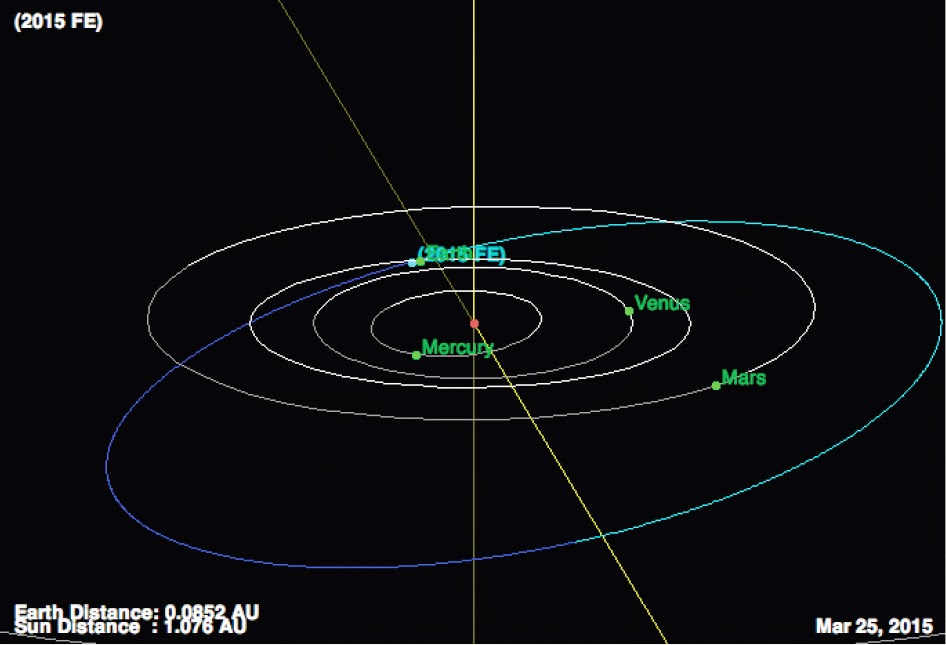Asteroid 2015 DJ215 passed by the Earth at a distance of 12 430 000 km (32.4 times the average distance between the Earth and the Moon, or 8.38% of the average distance between the Earth and the Sun), slightly before 5.30 pm GMT on Sunday 22 March 2015. There was no danger of the asteroid hitting us, though had it done so it would have presented minor threat. 2015 DJ215 has an estimated equivalent diameter of 28-90 m (i.e. it is estimated that a spherical object with the same volume would be 28-90 m in diameter), and an object towards the upper end of this range would be expected to explode in an airburst (an explosion caused by superheating from friction with the Earth's atmosphere, which is greater than that caused by simply falling, due to the orbital momentum of the asteroid) with an energy of over 30 megatons (more than 1760 times the size of the explosion caused by the Hiroshima bomb), less that half a kilometer above the ground, which would be expected to cause considerable damage at ground level, particularly if it occurred in a populated area.
The calculated orbit of 2015 DJ215. JPL Small Body Database.
2015 DJ215 was discovered on 23 February 2015 (27 days before its closest approach to the Earth) by the University of Hawaii's PANSTARRS telescope on Mount Haleakala on Maui. The designation 2015 DJ215 implies that it was the 5384th asteroid (asteroid J215) discovered in the second half of February 2015 (period 2015 D).
2015 DJ215 has an 442 day orbital period and an eccentric orbit tilted at an angle of 4.10° to the plane of the Solar System, which takes it from 0.96 AU from the Sun (i.e. 96% of the average distance at which the Earth orbits the Sun) to 1.31 AU from the Sun (i.e. 131% of the average distance at which the Earth orbits the Sun). It is therefore classed as an Apollo Group Asteroid (an asteroid that is on average further from the Sun than the Earth, but which does get closer). This means that close encounters between 2015 DJ215 and the Earth are quite common, with the last calculated to have happened in March 1980 and the next predicted for September this year.
See also...
Asteroid 2015 FC117 passed by the Earth at a distance of 6 542 000 km (17.0 times the average distance between the Earth and the Moon, or 4.37% of the average distance between the Earth and the Sun), slightly 6.45 am GMT on Sunday 22 March 2015. There...
Asteroid 2015 EG7 passed by the Earth at a distance of 1 044 000 km (2.72 times the average distance between the Earth and the Moon, or 6.98% of the average distance between the Earth and the Sun), slightly before 9.30 pm GMT on Friday 20 March 2015...
Asteroid 2015 FF passed by the Earth at a distance of 1 596 000 km (4.15 times the average distance between the Earth and the Moon, or 10.7% of the average distance between the Earth and the Sun), slightly before 8.30 pm GMT on Friday 20 March 2015...
Follow Sciency Thoughts on Facebook.




